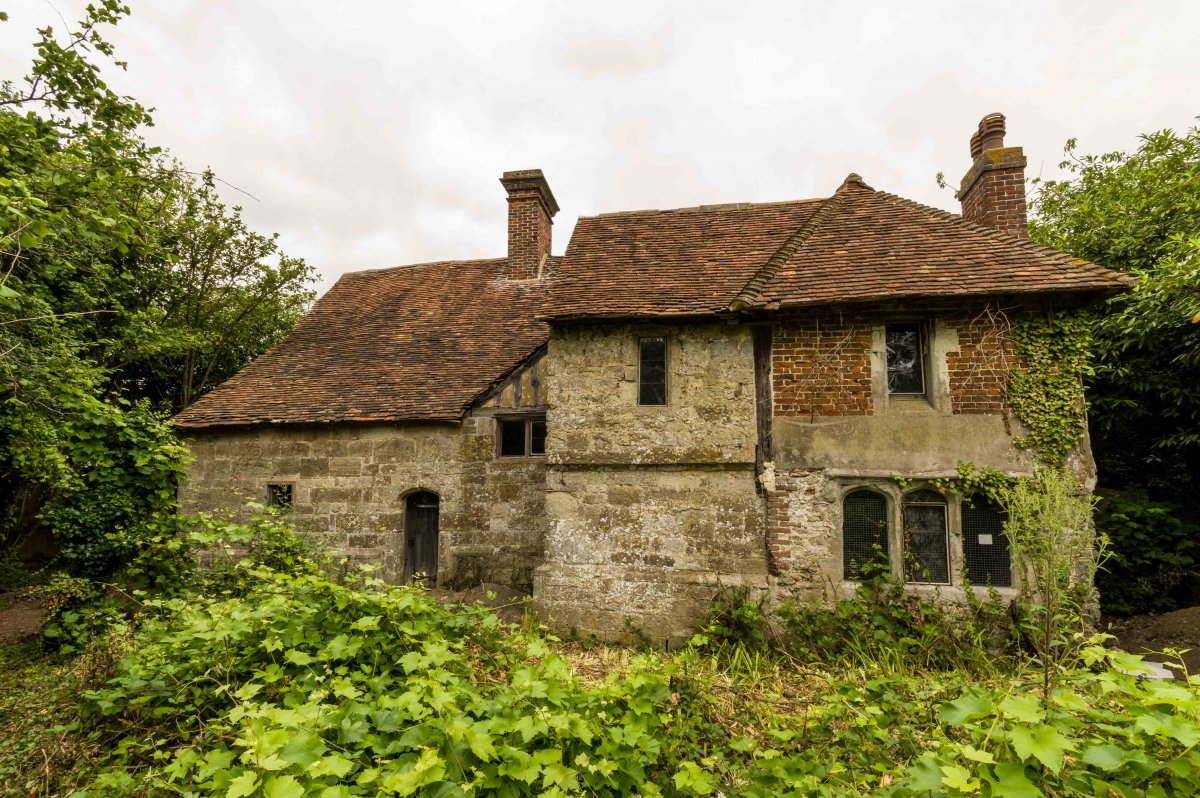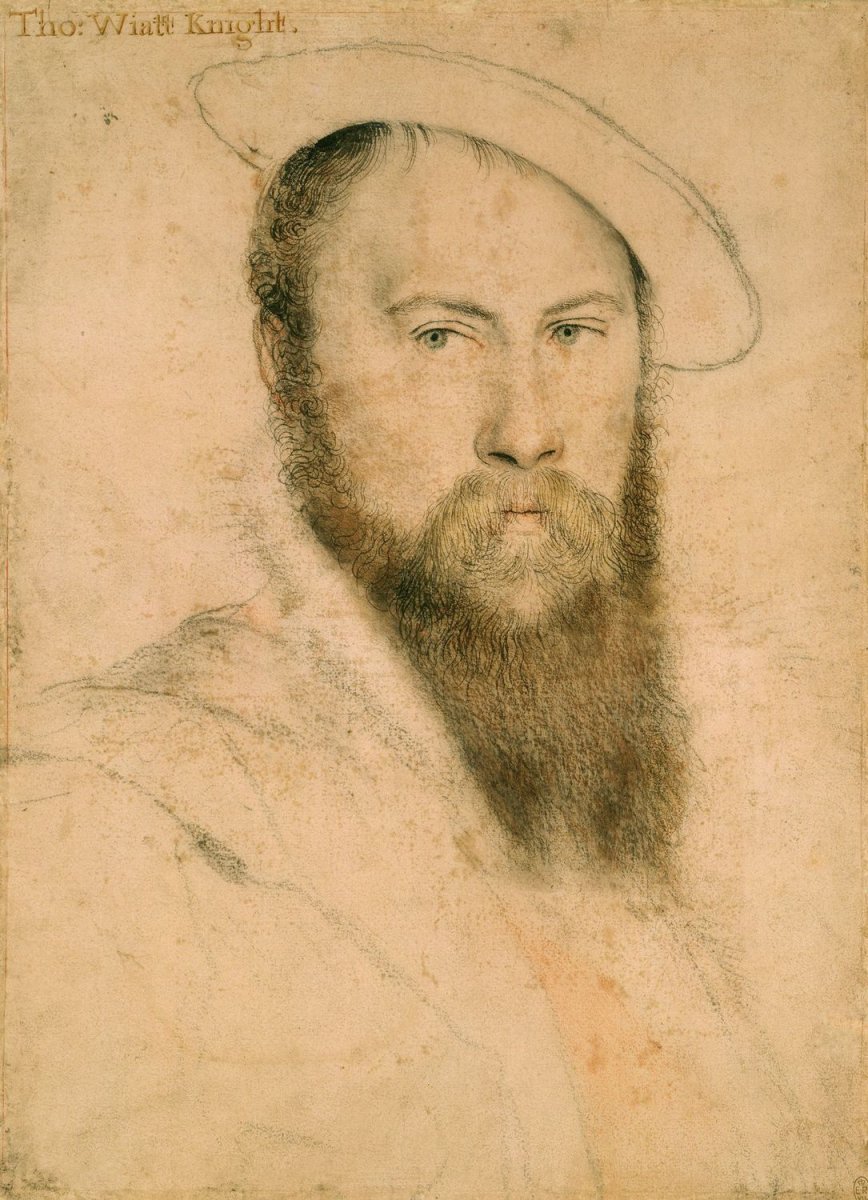The sonnet, perhaps the most romantic form of poetry, was introduced to English literature by Thomas Wyatt. Read on to discover his link to our Old House Project, and why his sonnets caused a stir in the Tudor court.
Thomas Wyatt (1503-1542) was a courtier, ambassador and has been described as "the Father of English Poetry".
Thomas Wyatt by Hans Holbein the Younger, Royal Collections
He was born nearby at Allington Castle, which still stands on the other side of the Medway from Boxley.
Published after his death, his 31 sonnets are the first written in English. Many of the poems explore unrequited or forbidden love and the hypocrisy of life at the Tudor court. Wyatt’s sonnets were radical in openly drawing from his personal experience and ending with a rhyming couplet, a form which he introduced.
As a boy Wyatt knew Anne Boleyn, who became Henry VIII’s second wife. In May 1536, Wyatt was imprisoned in the Tower of London for allegedly committing adultery with the queen. Wyatt was released later that year due the influence of his friend, the king’s advisor Thomas Cromwell.
Anne Boleyn, by Unknown English artist, oil on panel, late 16th century, National Portrait Gallery.
Wyatt’s poems are often read with his rumoured relationship with Anne Boleyn in mind. ‘Whoso List To Hunt’ perhaps alludes to Anne's relationship with the king:
'Graven in diamonds with letters plain,
There is written her fair neck round about,
Noli me tangere [Do not touch me], Caesar's, I am
And wild for to hold, though I seem tame.'
An early draft of Wyatt's late sonnet ‘If waker care, if sudden pale colour’ describes his love for a ‘Brunet’, ‘her that did set our country in a roar’. Perhaps in light of the controversy, he later changed to line to ‘Brunet, that set my wealth in such a roar’.
Back in the King’s favour by 1540, Wyatt was granted the lands of the dissolved Cistercian Boxley Abbey. This included our Old House Project St Andrews – formerly a gatehouse chapel to the Abbey – which we think was built in 1484.

St Andrews Boxley in 2020, showing the Tudor extension on the right © Daniel Bridge.
When the SPAB bought this Grade II* listed building in 2018, it had stood empty for 50 years. Hidden behind an overgrown garden, damaged by vandals, and with a leaking roof – this sleeping beauty needed to be saved. Since then, we’ve embarked on an ambitious repair project to rescue this ‘building at risk’ and return it to use as a home.
The building has a fascinating history. As a former medieval chapel, it was once home to a gruesome relic (St Andrew’s finger!), and was later home to a Victorian family, and then a 20th century post office.
In 1541 Wyatt was charged with treason again, but was granted a full pardon thanks to the intervention of Queen Catherine Howard. After her execution, there were rumours that Wyatt's wife Elizabeth was a candidate for Henry VIII's next wife. Wyatt died in 1542 and is buried in Sherborne Abbey.
Would you like to learn more about our Old House Project, and how we're bringing this sleeping beauty back to life? Our online talk is now available to watch on-demand.


